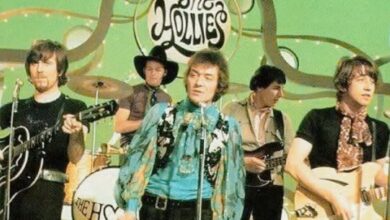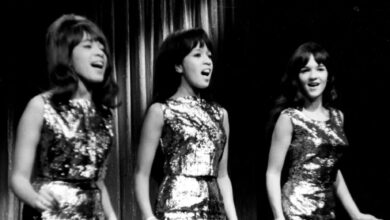Miley Cyrus Unites Pop Flair and Country Soul in a Show-Stopping “Man of Constant Sorrow” AFI Tribute
Miley Cyrus may dominate contemporary pop charts with memorably bright anthems such as “Flowers” and the era-defining “Wrecking Ball,” yet her artistry has always carried the warm twang and narrative soul of country music. Growing up under the roof of Billy Ray Cyrus, whose own “Achy Breaky Heart” ruled honky-tonk dance floors, Miley absorbed the rustic storytelling tradition from an early age. That heritage shone brilliantly in 2018 when she tackled the time-honored folk classic “Man of Constant Sorrow” during the American Film Institute’s tribute ceremony, a performance that would soon captivate millions online.
The AFI evening honored George Clooney as its newest Life Achievement Award recipient, and event producers cleverly wove musical callbacks to his filmography throughout the program. “Man of Constant Sorrow,” famously lip-synced by Clooney’s escaped-convict character in the Coen brothers’ 2000 odyssey O Brother, Where Art Thou?, emerged as the night’s showpiece. Reimagining the track, Miley merged Appalachian vocal stylings with her own pop-rock punch, forging a version that felt both reverent and freshly charged, echoing Clooney’s cinematic journey while unlocking new textures in the beloved song.
Guided by a driving upright-bass line and spirited banjo flourishes, Miley navigated the melody’s plaintive rise and fall with surprising grit. She leaned into raw lower tones for the verses, then lifted into ringing head-voice phrases that revealed just how wide her vocal canvas truly is. By tempering modern phrasing with mountain-music ornamentation, she honored the track’s bluegrass roots while stamping it unmistakably as her own. The resulting blend of old-time lilt and contemporary edge radiated irresistible vibrancy across the theatre.
Audience members responded in real time—gasps greeting the first a cappella notes, then waves of applause following each chorus. The house band’s fiddle player even flashed a grin mid-solo, clearly thrilled by Miley’s fearless pacing. When the final chord rang out, standing ovations rippled through the venue; cameras caught Clooney clapping vigorously, his smile stretching from ear to ear. That spontaneous reception foreshadowed the performance’s online afterlife, where millions of views and thousands of comments would soon accumulate in tribute to her genre-spanning dexterity.
Digital spectators, ranging from lifelong bluegrass devotees to curious pop fans, poured into the YouTube comment section with praise. Some marveled that an artist who once leapt across pop stages in neon could so naturally command a classic American lament. Others admitted they had discovered the song only through Miley and now planned to explore its century-old lineage. Each new viewpoint reinforced the notion that great storytelling can leap boundaries of age, genre, and expectation when delivered with genuine emotion.
Her fluid movement between musical worlds was no one-off novelty. Just a year later, she strode onto the fabled Pyramid Stage at England’s Glastonbury Festival and served a thunderous interpretation of Dolly Parton’s immortal “Jolene.” Donning glossy leather trousers, a cropped white top, and layers of glittering gold necklaces, she exuded swagger while honoring her godmother’s southern balladry. That Glastonbury set, packed with rock riffs and pop theatrics, underscored Miley’s knack for translating country songwriting into boundary-breaking spectacle that still feels intimate at its core.
Rewatching the AFI clip above reveals subtle interpretive choices that elevated the arrangement far beyond a simple cover. Notice how she elongates the consonants in “sorrow,” letting the word linger in the air like driftwood spinning on a river eddy, or how she quiets the band before the bridge, spotlighting lyrical despair before re-launching into a soaring final refrain. Those instincts demonstrate a storyteller’s understanding: dynamics matter as much as pure range, and tension can be as thrilling as volume when calibrating a narrative arc.
The Glastonbury video above offers an illuminating counterpoint. Where “Man of Constant Sorrow” leaned into plaintive storytelling, “Jolene” erupted with rock-edge swagger. Miley prowls the stage, vocal grit roughening Dolly’s pleading verses into pointed confrontation. Yet even amid pounding drums, her phrasing honors the melody’s yearning core, proving that faithful homage and stylistic reinvention can coexist. Taken together, the two performances trace a through-line that runs from Appalachian hollers to arena pop, stitched together by a single singer’s fearless curiosity.
Industry observers often cite such genre-bridging moments when explaining Miley’s longevity. She rose to fame as a teen idol yet steadily widened her palette, dipping into psychedelic rock on Miley Cyrus & Her Dead Petz, embracing ’80s pop sheen on Plastic Hearts, and channeling vintage country soul in her live tributes. Critics once skeptical of her restless reinventions now view them as markers of artistic integrity rather than mere rebranding, acknowledging that a truly modern performer need not live inside tidy marketing boxes.
Looking ahead, Miley’s ability to slide along the musical spectrum suggests limitless future collaborations—perhaps an outlaw-country duet, a bluegrass EP, or another surprise cameo at a Hollywood gala. Wherever she appears next, the lessons of that 2018 AFI stage will linger: great songs outlast decades, cinema and music converse fluently, and an artist willing to honor tradition while trusting her own instincts can summon fresh light from even the oldest folk standard. In that synthesis of reverence and rebellion lies the heart of Miley Cyrus’s enduring resonance.



